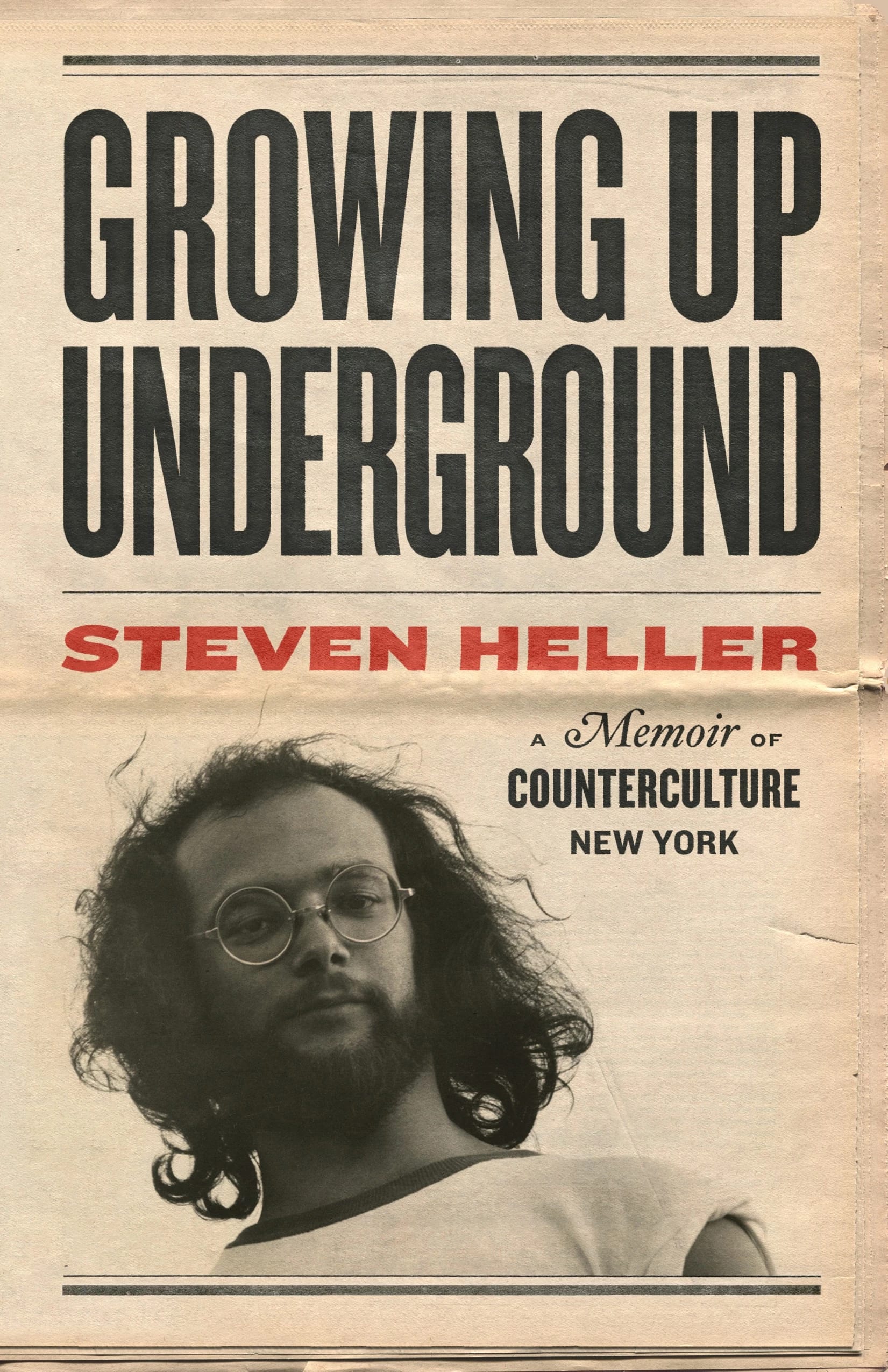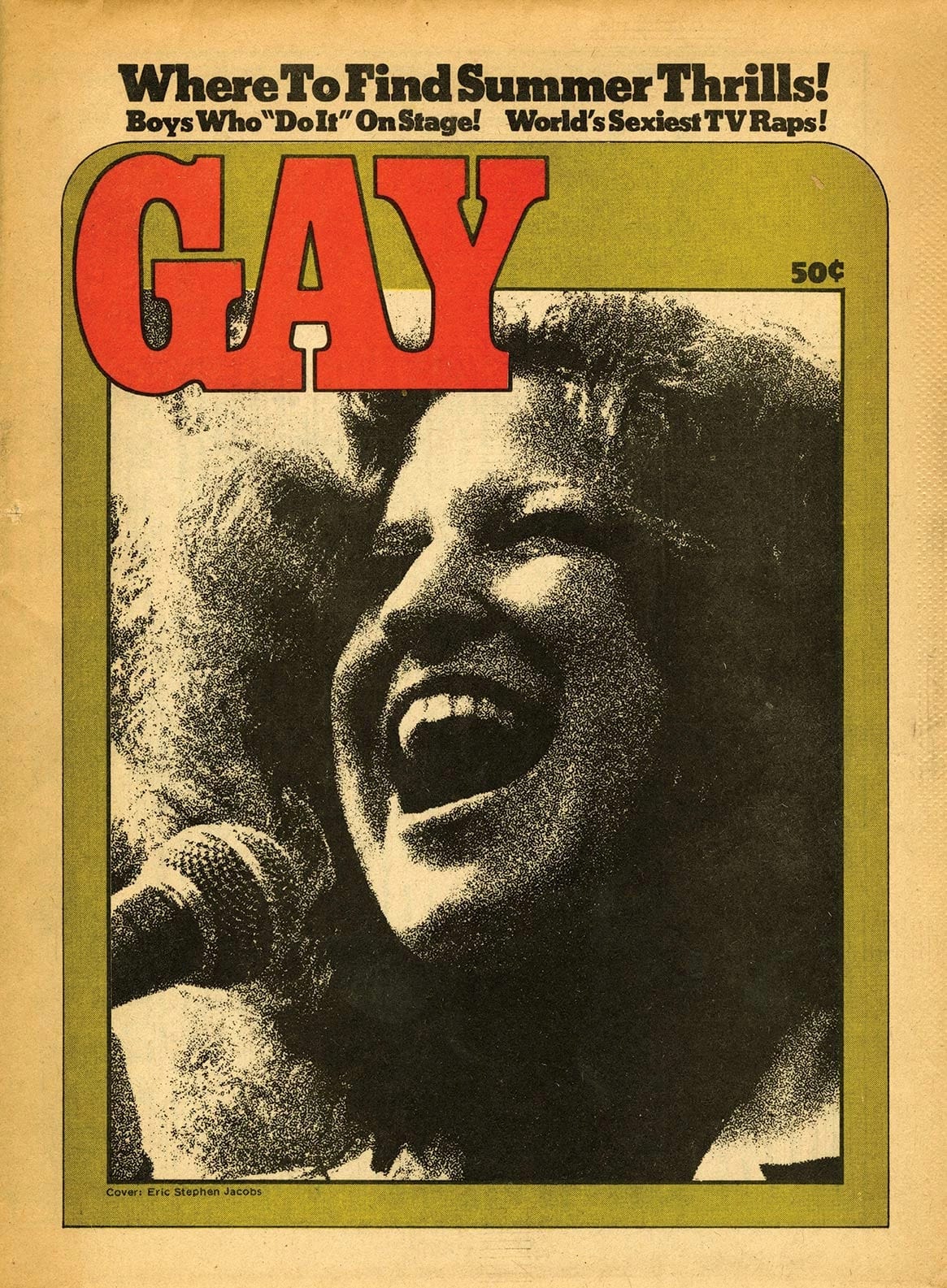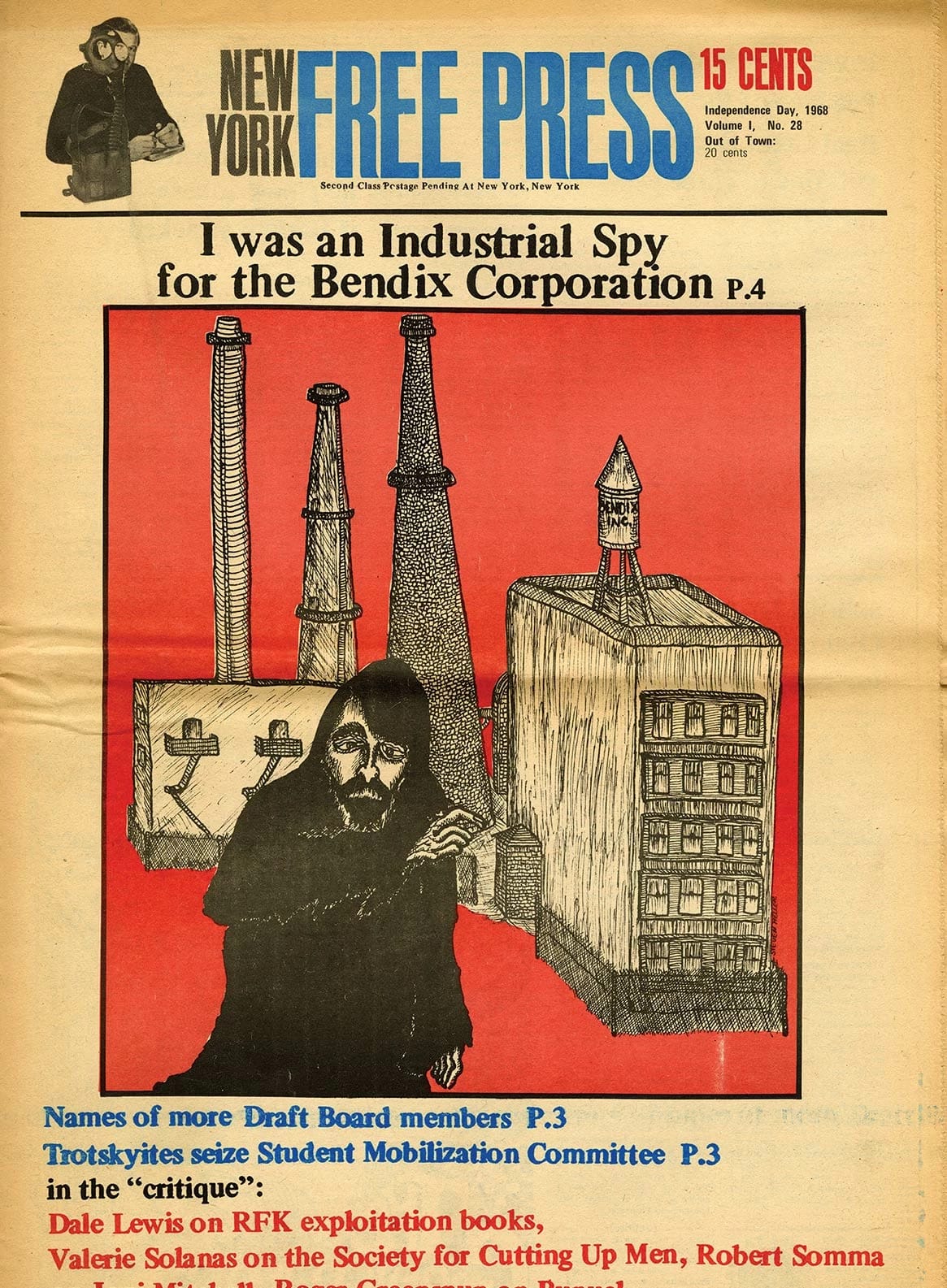The longtime faculty member and MFA Design co-chair’s latest book covers his years in New York’s alternative newspaper scene

MFA Design Co-Chair Steven Heller has had enough of a career that even summarizing it is exhausting. He has written, co-written and edited more than 200 books of design and illustration history and criticism. A longtime contributor to Print (and many other magazines), which ceased publication of its physical edition in 2017, he now maintains a blog, The Daily Heller, for the Print website, of which he is a part-owner. For 33 years, he was an art director (and then senior art director) and contributor at The New York Times, shaping the look of its Op-Ed page and weekly Book Review. And as an SVA faculty member since 1974 and co-founder of five of the College’s graduate programs, he stands on a very short list of the most influential shapers of the institution and its educational mission.
Very little of this is covered in Growing Up Underground, Heller’s new memoir, published this fall by Princeton Architectural Press. Instead, as the title suggests, the book primarily focuses on his coming of age in New York City in the late 1960s and early ’70s, when he began his career as a strikingly young and comparatively straitlaced design talent in the anarchic, roguish world of independent journalism.
Born and raised in Manhattan, Heller was the only child in a middle-class Jewish family with two working parents. A love of drawing sustained him through the pains of adolescence, and shortly after graduating high school, he lucked into an art director job at an alt-weekly called the New York Free Press, and sold his cartoons to other counterculture publications. This soon led to art-director roles at such outlets as the pornographic Screw and the short-lived Mobster Times—both created by the proudly disreputable publisher Al Goldstein—as well as work for the East Village Other, known for its support of underground comics artists like Robert Crumb; Andy Warhol’s Interview, which Heller redesigned in 1971; and a host of now-forgotten but equally iconoclastic publications.

All of this, it should be said, happened before he turned 25. (By that age, he was a full year into his tenure at the Times.) Accordingly, Heller’s story is a busy one. There were brushes with the law and with lawbreakers. There were strange victories, such as when he convinced a jury in Wichita, Kansas, where Goldstein was on trial for breaking federal obscenity laws, that Screw’s art direction gave the publication a redeeming social value. And there were noble misfires, such as Heller’s stint at the doomed Rolling Stone copycat Rock, where he got to know a pre-fame Patti Smith and her longtime bandmate Lenny Kaye, both of whom wrote for the tabloid.
“I happened to be working in the right medium, at the right place, at the right time,” Heller says. “It was a moment when the technology and the economics made alternative newspapers viable, and there were a lot of people who wanted to say something about what was going on in the society.” (Chiefly the Vietnam War, of which Heller was a vocal opponent.)
“It takes a certain amount of hubris to write a memoir,” he says. “But my experience of the ’60s was not the same as the stereotype of what went on. My response to the ’60s was not to do trips and get high, but I did enjoy the freedom we appeared to be taking and the resulting upset it put on the older generation.”
Earlier this month, MPS Branding Chair Debbie Millman interviewed Heller about his memoir for her Design Matters podcast; listen or read a transcript of their conversation here. And on Tuesday, October 25, 4:00pm, the two will kick off their new Print Book Club with a Zoom conversation about Growing Up Underground. For more information and a link to tune in, click here.
A version of this article appears in the fall/winter 2022 Visual Arts Journal.



